Juniper medium "Old Gold": description, secrets of planting and care
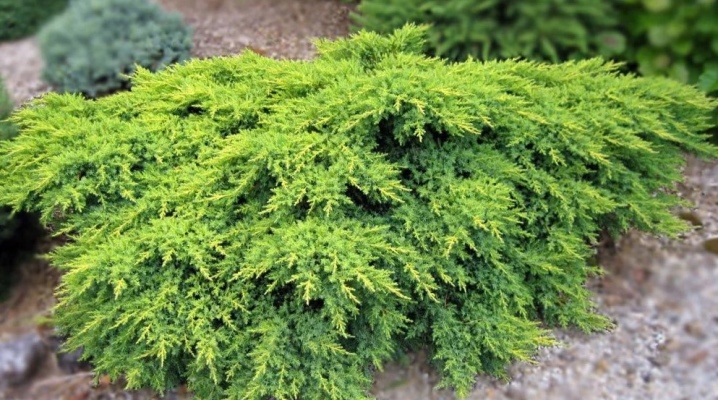
Juniper Chinese variety "Old Gold" was bred in Holland in the middle of the twentieth century. Gardeners fell in love with this variety for its interesting crown color and unpretentious care. Indeed, its cultivation is not particularly difficult, but it is important to consider some of the needs of the variety so that the culture adorns the garden for many years.

Description
This variety belongs to a species called Pfitzeriana juniper. Adult plants grow up to 1.5 m in height, their crown diameter is 2.5-3 m. Refers to slowly growing crops, the annual growth is only 5-7 mm. At the age of 10, the specimen reaches a length of 0.5 m and a width of 1 m.
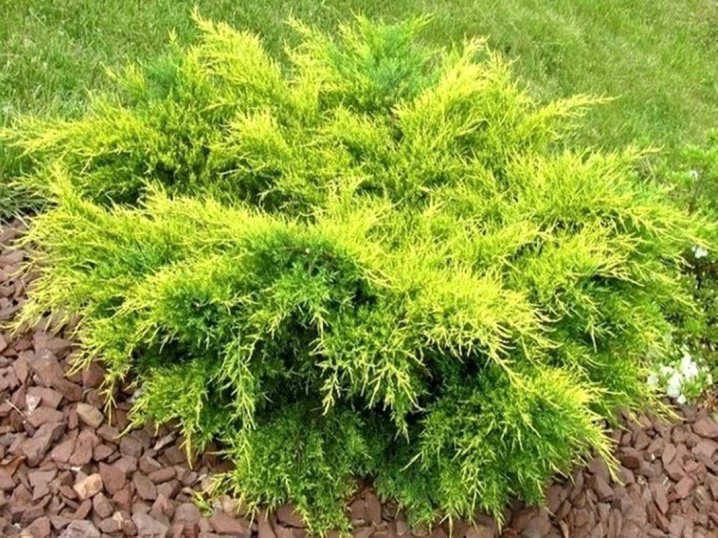
It is characterized by a flat and dense crown. If it is not trimmed, then the shape of the crown resembles a star.
The needles are golden in color with a bronze sheen. Ripening of fruits - cones is possible, but this happens extremely rarely and in minimal quantities.
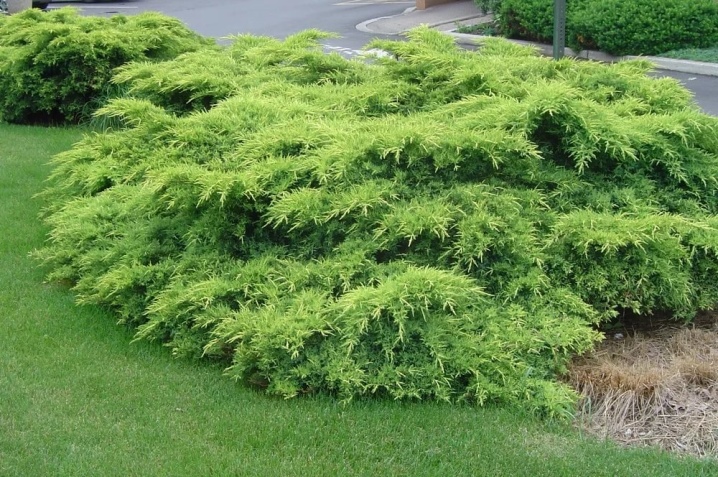
The presented species is distinguished by good winter hardiness., he loves light, and if planted in a shaded area, he loses the aesthetic color of the needles, takes on a lifeless look, loses immunity to diseases.
Juniper "Old Gold" does not tolerate stagnation of moisture, which should be taken into account when choosing a site for planting it.
In addition to its decorative properties, the shrub also has phytoncidal qualities - it purifies the air and fills the garden with a pleasant aroma due to scaly needles. Can be used for containerized content.
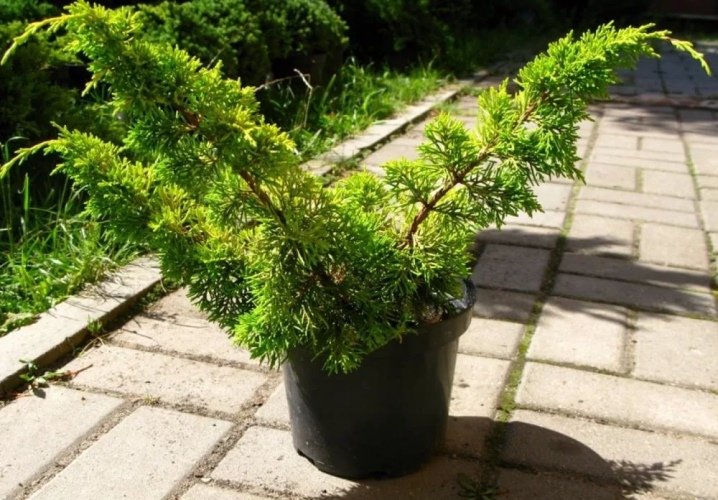
Landing features
Before you start planting a bush, it is important to find the most suitable site for it. This should be a place well lit by the sun. The variety does not impose strict requirements on the soil, but the bush will feel more comfortable on sandy loam soils with a reaction from neutral to slightly acidic.
It is recommended to plant the shoot in the spring, and prepare the planting hole for it in the fall. Then the earth will have time to sink and form the bottom.
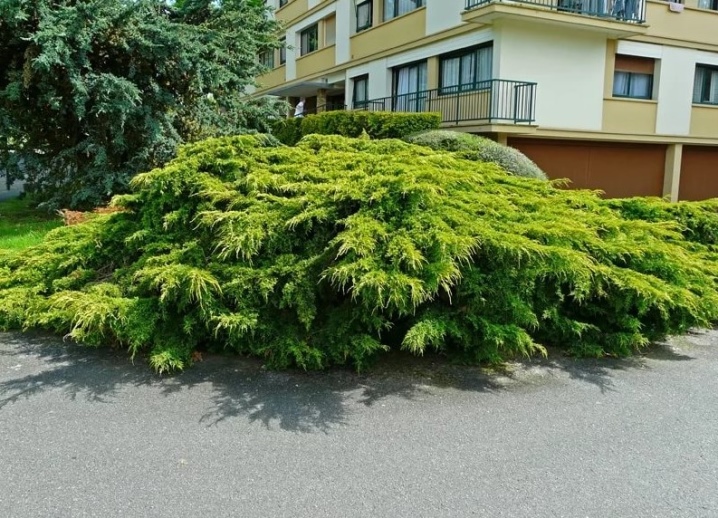
The planting process is as follows.
- Prepare the planting hole. Its diameter should be 2 times wider than the earthen coma. The depth of the hole is 60-80 cm.
- Organize drainage in a layer of 15-20 cm. Sand with bricks or rubble is suitable.
- Prepare a nutrient mixture. To do this, you can combine peat, turf soil and sand in a ratio of 2: 1: 1. In the case of using too poor soil, you can add humus to the mixture.
- Pour the prepared composition into the pit.
- Place the seedling together with the earthen lump in the hole, first straightening the roots so that the root collar remains above the ground.
- Fill the free space with prepared earth.
- Moisten the planting site with warm water. Do not compact the soil, the earth itself will sag under the influence of precipitation, and the sprout will sink.
- Mulch the soil around the seedling at a level of 10-12 cm. You can use leaf humus, moistened peat, pine chips, compost. This procedure is designed to retain moisture, prevent decay of the root system, and protect from frost.
- If this is a group landing, then the recommended distance between two copies is at least 1-1.5 m.
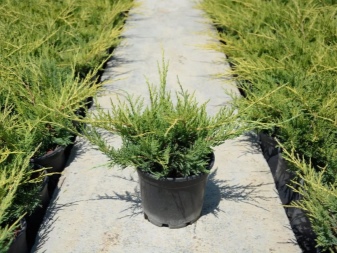

Further, the seedling should be looked after. So, the first 1-1.5 weeks, it is required to moisten the soil, but do not use a hose for this, so as not to damage the roots and mulch. Use for watering settled water. During dry periods, spray young plants in the morning and evening, but with low pressure, so as not to injure fragile young branches.
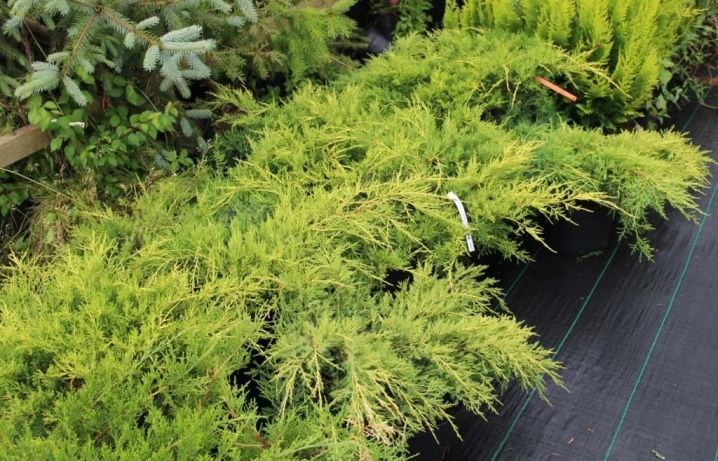
Care rules
A bush planted on a site needs uncomplicated, but competent care. Basic rules for growing juniper.
- In the first couple of weeks after planting organize a shelter for the plant from the sun's rays at noonotherwise the needles will burn in the sun. For this, sacking or agrofibre is suitable.
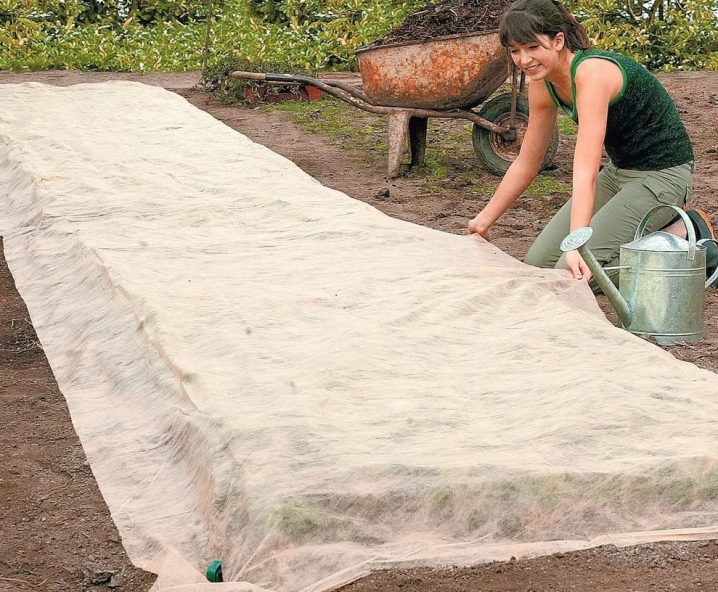
- Water the crop frequently in the first year.... It is necessary to moisten the soil when it dries to a depth of 4-5 cm. It is advisable to irrigate the crown of the tree with water - this procedure will allow the shrub to open up in all its glory.
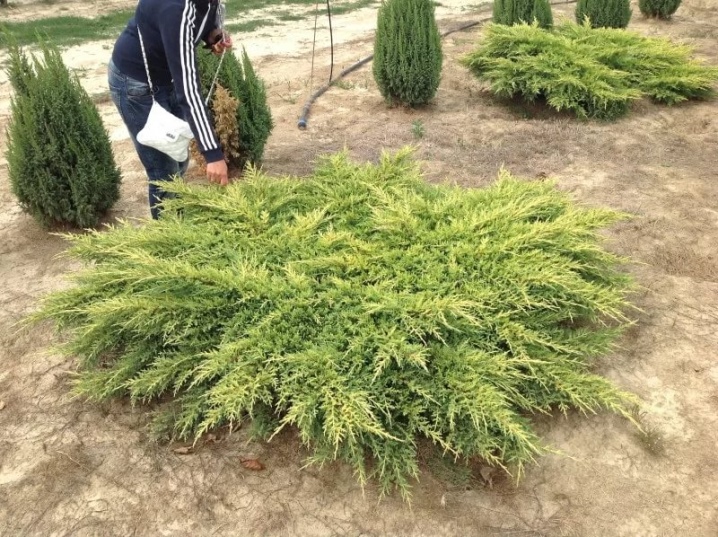
- So that the roots always have access to oxygen, loosen the soil around the seedling the day after watering. Remember to remove the weeds. Use mulch such as peat or coniferous sawdust as protection against weeds.
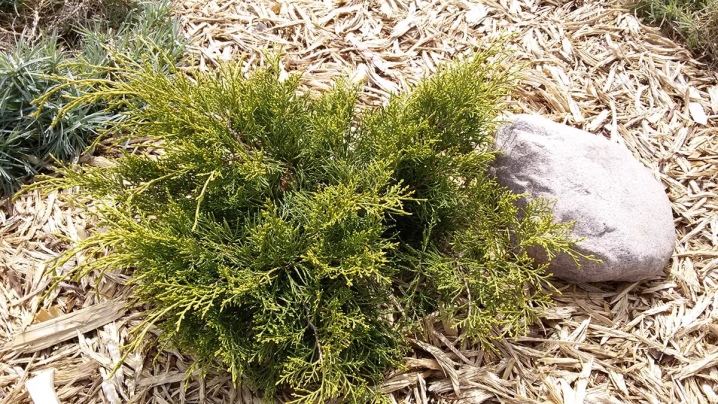
- From the second year of life, you can start feeding. The first fertilization is applied in early spring. The starting additional food can be nitroammofoska or Kemira-universal. Feeding will not be superfluous in the autumn. During this period, a solution of 15 g of superphosphate and 10 g of potassium salt per 10 liters of water is more suitable. This mixture will allow the shrubbery to prepare for the frost. It is advisable to carry out foliar dressing 2-3 times per season, for example, you can process the crown with Brexil Combi, Quantum or Aminomax-N.

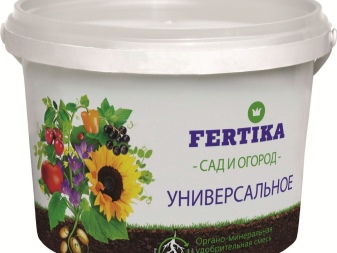
- Perform sanitary pruning in the spring. The essence of the procedure is to remove dry, damaged, frozen branches. At the age of 10, the tree needs a light haircut, that is, the branches of the current year can be pruned by 2-3 cm. Decorative pruning is rarely carried out - the bush has a beautiful spreading crown even without it. Before cutting, treat all tools with a disinfectant, and spray the cut points with a solution of copper sulfate.
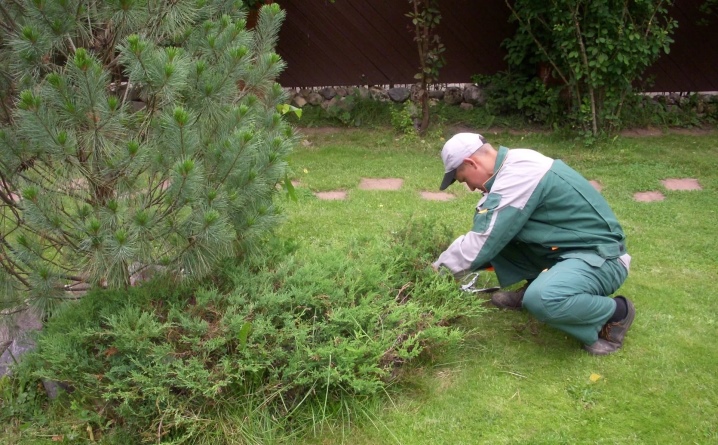
- Adult bushes do not need to be prepared for winter, it is recommended just a month before frost to spud the trunk circle with peat or coniferous sawdust... Young specimens, which include plants up to 3 years old, are best insulated before the cold weather. This procedure is especially important in areas with cold, long winters. In this case, you will need not only a layer of mulch, but also a shelter, for example, spruce branches, burlap, agrofibre. The material must be breathable so that the tree has access to oxygen.

Reproduction methods
It is possible to breed a culture in two ways. Let's take a closer look at each of them.
Cuttings
Cuttings are harvested in mid-spring from a healthy adult shrub, who has already reached the age of 5... Shoots are cut off the tree, capturing part of the wood.
The needles are removed from the lower part by about 5 cm and the ends are treated with "Epin" or "Kornevin". These drugs will contribute to the full development of the seedling.
Next, the cuttings are planted in a wet mixture of peat and sand in equal proportions to a depth of 3-4 cm at an angle of 40-45 degrees, moisten the substrate and cover the container with glass or film.
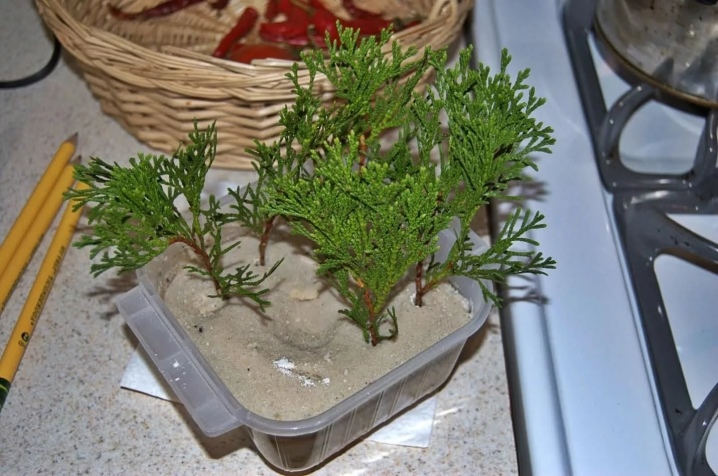
The pot should be placed in a warm place with diffused lighting and left at a temperature of 20-23 degrees, the recommended humidity is 65-70%. Every day, the room needs to be ventilated, and potential bushes should be sprayed when the soil dries out. After a couple of months, you can observe how new buds hatch on the cuttings. This means that the film can be removed. Watering, weeding and loosening continues.
After about 1.5 years, the seedlings can be planted in open ground.

Layers
In this case, the densest and largest stem is chosen on the plant, a groove is pulled out next to a depth of 4-5 cm, the needles are removed from the selected branch and it is placed in the groove, fixing it with staples. Further, the future planting is sprinkled with a mixture of peat and sand and moistened.
If the procedure is carried out in the fall, then it is important to add a layer of soil 5-6 cm so that the plant does not freeze.
The stalk can be dug up and removed in the spring when the parent starts growing. When dividing, the branch is divided into parts, each of which must contain several roots and buds, then they are seated in separate places.
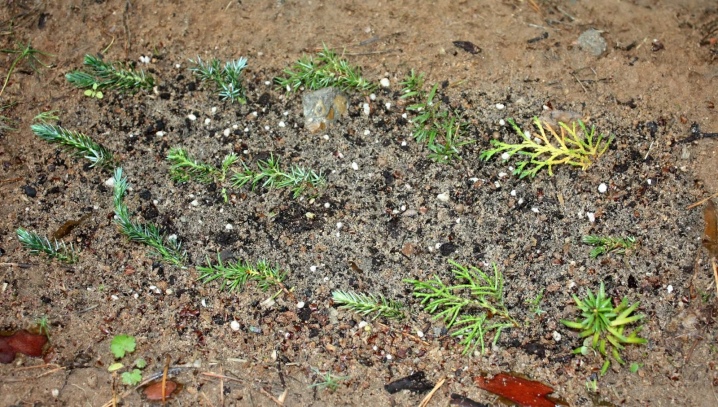
Diseases and pests
The Old Goal variety cannot boast of high disease resistance.
More often than not, he is amazed. mold or mildew. These ailments can be triggered by waterlogging of the soil. Dark spots on the trunk and needles may indicate the presence of the disease.


To get rid of the disease reduce the frequency of watering so that the soil dries thoroughly, and treat the culture with Bordeaux mixture. To prevent fungal diseases, spring preventive spraying with fungicides or preparations containing copper is carried out.
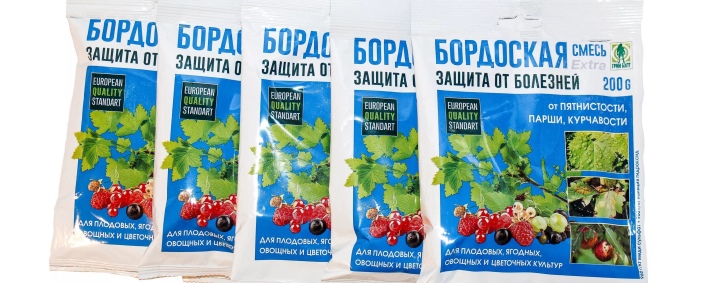
Another common ailment for the variety is rust. Most often, the plant is no longer amenable to treatment and it is recommended to eliminate the diseased specimen. To avoid the appearance of rust, you can plant near fruit-bearing crops, for example, near black currants.

Of the insects, they love to feast on juniper most of all. spider mite, moth, scale insect. To destroy hordes of harmful individuals, you should turn to the help of insecticides. The most effective in gardening circles are considered Fitoverm, Karbofos and Iskra.
Means are allowed to be used as a preventive measure, but it is very important to treat plants with them in accordance with the instructions.
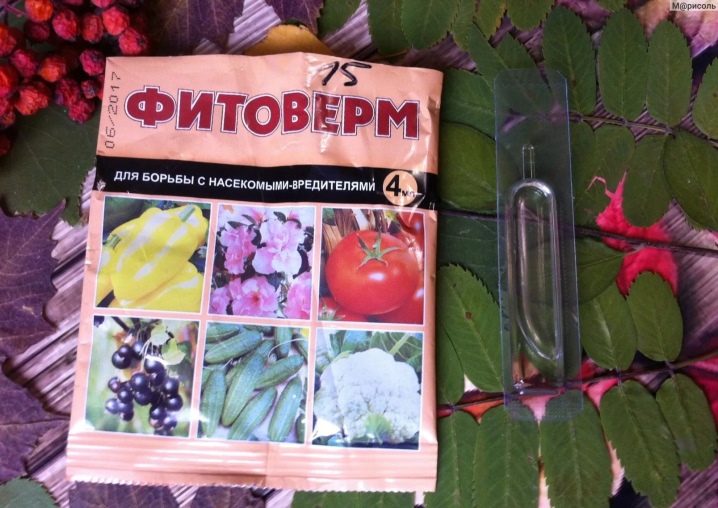
Examples in landscape design
The decorative properties of the variety allow it to be used in various stylistic directions. You can use a juniper to create a garden composition, arrange a lawn with it or decorate an alpine slide. This type is often used to create hedges.
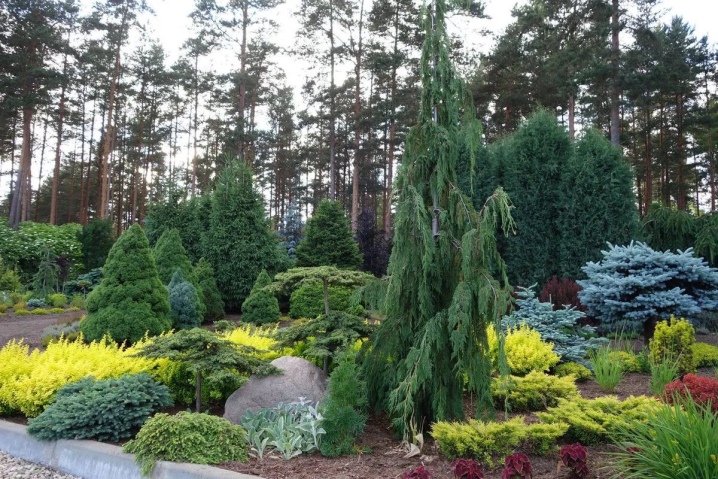
Neat compositions can be created by combining culture with stunted, decorative deciduous plants and heather. Vibrant flowering plants will look beautiful if planted around a juniper. You can also plant along the alleys, decorate the city park, rockery, mixborder with multi-level conifers.
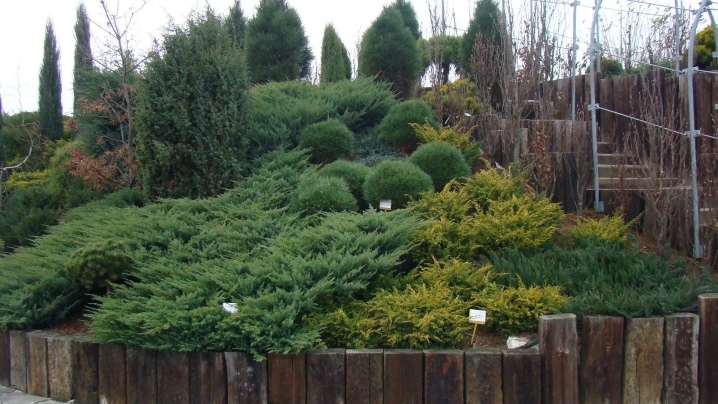
The crown of the tree has an emerald color, which not only stands out against the general background, but also emphasizes the beauty of neighboring plantings. You can make the juniper the main plant of the composition, or you can use it in a collective planting with other conifers.
Small growth allows this variety to be planted when decorating stones and garden ponds.
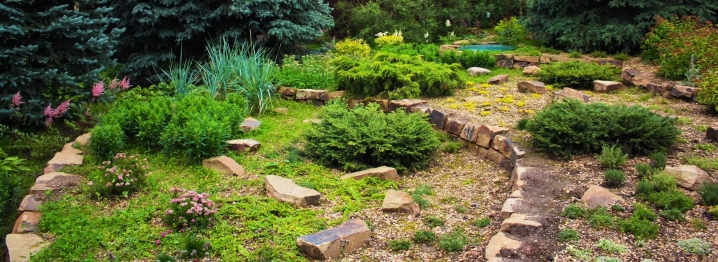
A harmonious combination is obtained when juniper is adjacent to thyme, bryozoan, saxifrage. A picturesque landscape will decorate the garden while combining culture with bushes of orange, yellow, white roses. It is allowed to decorate balconies, terraces, loggias with the presented variety. A shrub planted in a clay container or wooden tub looks beautiful.
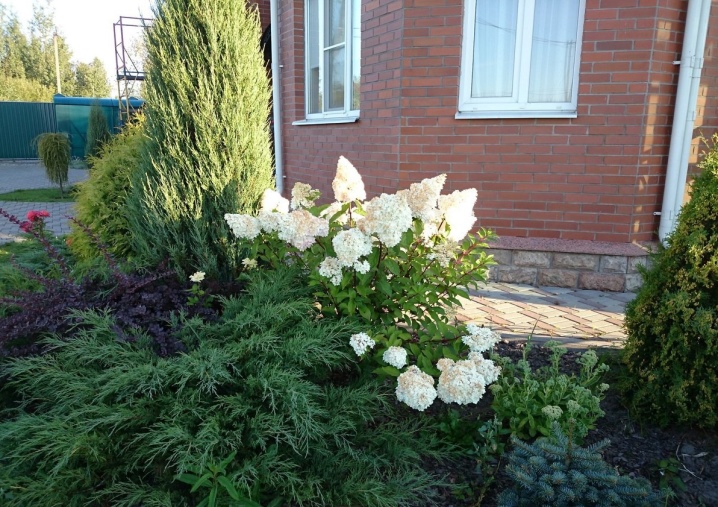
In the next video, you will learn the basic rules for caring for a juniper.



































































The comment was sent successfully.